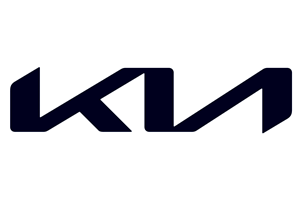A brief history of
KIA
Introduction
The car manufacturer KIA has made an important impact on the automotive world. In this article we will give a brief but detailed history of the KIA marque.
We will look at the origins of KIA looking at who, why, where and when KIA was founded. We'll look at the design of the iconic KIA logo and what are some the more significant KIA models.
We'll take a glance at what racing history the KIA has and who some of the most important people have been in the history of KIA over the years.
Who, where, when and why was
KIA founded?
KIA Motors Corporation, commonly known as KIA, is a South Korean automotive manufacturer that has grown to become one of the largest and most successful automobile companies in the world. The company was founded on December 11, 1944, and has its headquarters in Seoul, South Korea. Originally, KIA started as a manufacturer of bicycle parts and steel tubing under the name Kyungsung Precision Industry. However, the company expanded its operations and entered the automotive industry in 1974, with the production of small passenger cars.
KIA's early years in the automotive industry were marked by a focus on domestic sales in South Korea. The company steadily gained recognition for producing reliable and affordable vehicles, which resonated with the Korean market. In 1986, KIA made its first international foray by exporting vehicles to Canada, followed by exports to various other countries. This expansion into international markets laid the foundation for KIA's global presence and marked the beginning of its journey as a major player in the global automotive industry.
One of the key reasons behind KIA's founding and subsequent growth was the Korean government's strategic focus on developing the country's automotive industry. With a vision to achieve self-sufficiency in automobile production and promote economic growth, the government provided support and incentives to companies like KIA. This support included financial assistance, research and development grants, and policies aimed at promoting the export of Korean-made vehicles. KIA capitalized on these opportunities, investing in technology, design, and production capabilities to develop competitive and high-quality vehicles.
Furthermore, KIA's commitment to innovation and continuous improvement has been a driving force behind its success. The company has consistently invested in research and development, fostering partnerships with leading global automotive suppliers and leveraging advanced technologies to enhance its product offerings. KIA's dedication to quality and design excellence has earned it numerous accolades and recognition in the automotive industry.
Today, KIA is known for its diverse range of vehicles, including sedans, SUVs, crossovers, and electric vehicles. The brand's commitment to delivering vehicles that combine performance, reliability, and affordability has resonated with consumers worldwide. With a strong presence in both established and emerging markets, KIA continues to expand its global footprint and cement its position as a leading automotive manufacturer.
How did the
KIA logo originate?

How did the KIA logo originate?
The logo of KIA has undergone several transformations over the years, reflecting the evolution and growth of the brand. The earliest version of the KIA logo featured a simple red emblem with the brand name spelled out in capital letters. This logo represented the company's initial entry into the automotive industry in the 1970s.
In 1994, KIA introduced a new logo design that would become iconic for the brand. The new logo featured an oval shape with the letters K, I, and A interlinked in a stylized manner. The blue color symbolized trust, reliability, and stability, while the silver outlines added a touch of sophistication. This logo captured the brand's commitment to innovation and forward-thinking, as KIA aimed to establish itself as a global player in the automotive market.
Over time, KIA made subtle modifications to its logo to align with evolving design trends. In 2012, the logo underwent a significant update, with the letters K, I, and A placed inside a red shield-shaped emblem. The shield symbolized strength, protection, and the brand's commitment to customer satisfaction. The typography was also refined, giving the logo a modern and dynamic appearance.
In 2021, KIA introduced its latest logo, marking a significant milestone for the brand. The new logo featured a simpler and more minimalist design, with the letters K, I, and A written in a custom typeface. The lines were sleek and flowing, conveying a sense of movement and progress. The logo also embraced a new color scheme, with a vibrant gradient of blue representing KIA's ambition and determination to lead the future of mobility.
The evolution of the KIA logo reflects the brand's journey from its humble beginnings to its current global stature. Each iteration of the logo captures KIA's commitment to innovation, quality, and customer satisfaction, while also adapting to changing design trends. The logo serves as a visual representation of the brand's values and aspirations, as KIA continues to push the boundaries of automotive technology and design.
What are some of the significant
KIA models?
KIA has produced several significant models throughout its history, with a focus on delivering high-performance vehicles that cater to different segments of the market. From sedans to sports cars and SUVs, KIA has consistently strived to provide thrilling driving experiences combined with cutting-edge technology and design.
In the early years of its history, KIA introduced the KIA Pride, a compact sedan that became popular in the 1980s. While not a performance-oriented model, it laid the foundation for KIA's future success by establishing the brand's reputation for affordability and reliability.
As KIA expanded its presence globally, it entered the performance segment with the introduction of the KIA Stinger in 2017. The Stinger, a fastback sports sedan, showcased KIA's ability to deliver exceptional performance, style, and refinement. With its powerful engine options, rear-wheel drive, and dynamic handling, the Stinger challenged traditional perceptions of the brand and garnered critical acclaim.
Another notable model in KIA's performance lineup is the KIA GT, which made its debut in 2011. The GT concept car was unveiled at various international auto shows, generating excitement among enthusiasts. Its sleek design, rear-wheel drive configuration, and turbocharged engine hinted at KIA's aspirations to compete in the high-performance segment. The GT eventually evolved into the KIA Stinger, becoming a production reality and solidifying KIA's position as a manufacturer of performance vehicles.
In recent years, KIA has expanded its performance offerings to include SUVs, catering to the growing demand for sporty and versatile vehicles. The KIA Telluride, introduced in 2019, is a mid-size SUV that combines performance and practicality. With its muscular design, spacious interior, and powerful engine options, the Telluride offers a compelling blend of performance and utility.
Looking ahead, KIA has unveiled its plans for the future of performance vehicles with the introduction of the KIA EV6 GT. The EV6 GT is an all-electric high-performance model that showcases KIA's commitment to sustainable mobility without compromising on power and excitement. With its lightning-fast acceleration and advanced electric powertrain, the EV6 GT represents a new era of performance for KIA.
From compact sedans to sports cars and SUVs, KIA has consistently pushed the boundaries of performance in various segments of the automotive market. With each new model, KIA has demonstrated its ability to combine thrilling driving dynamics, cutting-edge technology, and striking design. As the brand continues to evolve, we can expect to see more exciting and high-performance models from KIA in the future.

One of KIA's Most Iconic Models
Who are some of the most important people in
KIA's History
Behind the success of KIA, there have been several significant individuals who have played key roles in shaping the brand and driving its growth. These individuals have contributed their expertise, leadership, and innovative ideas to propel KIA to where it stands today.
One notable figure in KIA's history is Mong-Koo Chung, the former chairman and CEO of the Hyundai Motor Group, which includes KIA. Mong-Koo Chung is widely recognized for his strategic vision and leadership, instrumental in transforming KIA from a relatively small manufacturer to a global automotive powerhouse. Under his guidance, KIA expanded its product lineup, improved quality standards, and successfully penetrated new markets, gaining recognition and trust from customers worldwide.
Another influential person within the KIA organization is Peter Schreyer, the chief design officer of Hyundai Motor Group. Schreyer's appointment in 2006 marked a significant turning point for KIA's design language. He introduced the brand's signature "Tiger Nose" grille, which has become an iconic element of KIA's identity. Schreyer's design philosophy prioritizes elegance, simplicity, and a sense of dynamism, resulting in visually appealing and distinctive vehicles across KIA's lineup.
In addition to leadership and design, KIA has also benefited from the expertise of individuals in the field of engineering. Albert Biermann, the former head of BMW's M Division, joined KIA as the president of the company's High-Performance Development Division. Biermann's vast experience and technical knowledge have been instrumental in enhancing KIA's performance offerings. His influence can be seen in models like the KIA Stinger, where precise handling and dynamic performance were prioritized.
Furthermore, KIA has a team of talented engineers and designers who work diligently to bring innovative ideas to life. Their expertise in areas such as powertrain development, aerodynamics, and advanced driver-assistance systems has resulted in the creation of cutting-edge technologies and remarkable vehicles. These individuals are the driving force behind KIA's commitment to continuous improvement and staying at the forefront of automotive innovation.
As KIA continues to evolve and expand its presence globally, the contributions of these individuals and many others have played a pivotal role in shaping the brand's success. Their dedication, expertise, and innovative thinking have helped KIA establish a strong reputation and gain recognition in the highly competitive automotive industry. With their continued efforts, KIA is well-positioned to drive further advancements in design, technology, and performance, ensuring a bright future for the brand.

One of the most influential people in the history of KIA
KIA's Racing History
KIA may not be the first name that comes to mind when thinking about racing history, but the brand has made significant strides in motorsport over the years. While primarily known for producing passenger vehicles, KIA has also ventured into various racing disciplines, showcasing its engineering capabilities and performance-oriented mindset.
One area where KIA has been active in racing is touring car championships. The brand has participated in prominent touring car series around the world, such as the British Touring Car Championship (BTCC) and the Australian Supercars Championship. KIA's involvement in these competitions has allowed the brand to showcase its performance-oriented models and demonstrate their capabilities in high-speed racing conditions.
In 2011, KIA made its debut in the BTCC with the KIA Optima, becoming the first Korean manufacturer to compete in the championship. The team, known as KIA Racing, achieved notable success in the following years, including podium finishes and strong race performances. The participation in the BTCC provided valuable exposure for the brand and highlighted its commitment to performance and motorsport.
Another area of racing where KIA has made its presence felt is endurance racing. The brand has competed in endurance events such as the Nürburgring 24 Hours, where teams endure the grueling 24-hour race on the iconic German circuit. KIA's participation in endurance racing serves as a testament to the brand's durability, reliability, and performance capabilities, as these races push both the drivers and the vehicles to their limits.
Furthermore, KIA has also embraced the emerging field of electric racing. In recent years, the brand has made forays into electric motorsport, participating in events like the Electric Production Car Series (EPCS). KIA's involvement in electric racing aligns with its commitment to sustainable mobility and showcases the brand's ability to combine high-performance electric powertrains with efficient and environmentally friendly technologies.
While KIA's racing history may not be as extensive or storied as some other manufacturers, the brand's participation in touring car championships, endurance races, and electric racing demonstrates its passion for performance and innovation. KIA's foray into motorsport allows the brand to test and refine its vehicles under demanding conditions, ultimately benefiting its production models and showcasing its engineering prowess. As KIA continues to evolve and expand its lineup, its involvement in racing will likely continue to grow, further enhancing the brand's reputation and captivating motorsport enthusiasts around the world.
Summary
KIA is a prominent car manufacturer that has gained recognition for its commitment to producing high-quality vehicles with a focus on design, performance, and innovation. With a diverse range of models spanning various segments, KIA has established itself as a competitive player in the global automotive industry.
The brand's success can be attributed to its ability to combine affordability with impressive features, making it an appealing choice for a wide range of consumers. KIA's vehicles are known for their modern styling, advanced technology, and efficient powertrains, offering a compelling value proposition in their respective segments.
View KIA Car Specifications
More Manufacturer Histories.

























